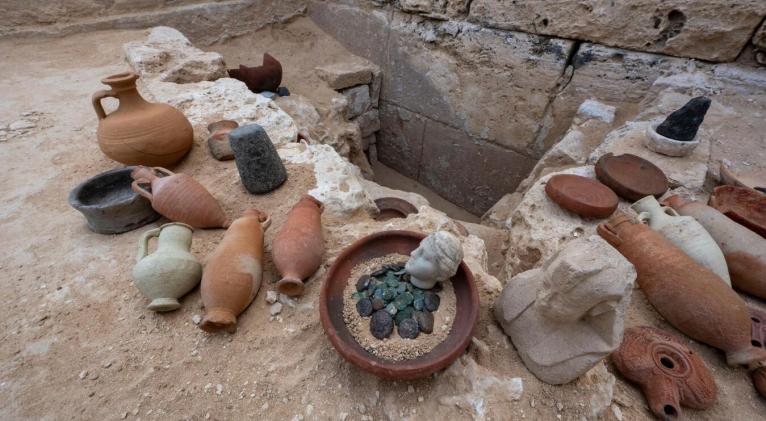
Egypt, Dec 10.- An Egyptian-Dominican archaeological mission discovered a treasure trove of objects in the temple complex of Taposiris Magna, west of the Egyptian city of Alexandria, reported from the Egyptian Ministry of Tourism and Antiquities.
The findings include statuettes, coins and ceramic pieces that shed light on the history of the site during the period of the Ptolemaic dynasty, the statement says. The mission, led by archaeologist Kathleen Martínez, discovered the foundation deposits under the southern wall of the temple's outer enclosure.
Among the most significant discoveries are a small white marble statuette of a woman with a royal crown and a limestone bust of a king with a neme headdress.
Martinez said the female statue could represent Queen Cleopatra VII, although other archaeologists suggested she could represent a princess, due to differences in facial features, the statement says.
The team also dug up 337 coins, many of them with the effigy of Cleopatra VII, along with various ceramic pieces, oil lamps, limestone vessels to store food and cosmetics, bronze figurines and a beetle-shaped amulet.
These findings, along with ceramic fragments from the end of the Ptolemaic period, indicate that the temple walls were built in the 1st century BC. Martinez also announced the discovery of the remains of a fourth-century Greek temple, which was destroyed between the 2nd century BC and the beginning of our era. (Text and Photo: Cubasí)